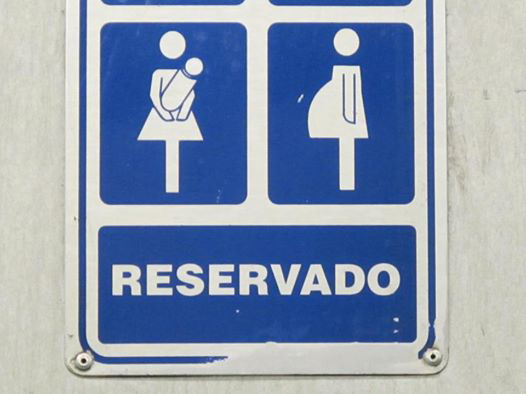By: Anne E. Pfister
Anne E. Pfister is associate professor of anthropology at the University of North Florida (UNF) and current Director of UNF’s Digital Humanities Institute. She investigates the experience of deafness among deaf youth and their families in Mexico City, Mexico integrating the analytical lens of medical anthropology and using socio-linguistic and applied approaches.
The week of my daughter’s first birthday party, I learned I was pregnant with our second child. I was preparing for a yearlong ethnographic fieldwork stay in Mexico City, to research the experience of deafness from the perspectives of deaf youth and their families. I quickly re-organized my research timeline to fly home at the midway point of my fieldwork to give birth, and return to Mexico City soon after. Though I did not have a theoretical framing for it at the time, I realize now that this arrangement exemplifies “patchwork ethnography” which draws attention to “how anthropologists have been innovating methods and epistemologies to contend with intimate, personal, political, or material concerns” (Günel et al. 2020). In this essay, I ask: how does being a mother and mothering in the field contribute to my ethnographic enterprise? And: how can reflecting on “motherhood” help identify points of resonance with mothers and children in the field and also disentangle imbalances that persist between researcher and participants?
This essay considers images taken during an intense and exciting period where my own motherhood influenced my research among – and camaraderie with – mothers and their children. I draw on Günel et al.’s call for “recombinations of ‘home’ and ‘field’” by suggesting that ‘home’ is brought into the shared space of the ‘field’ through pregnancy and mothering. I use ‘home’ as a loose metaphor for aspects of ourselves we typically keep close, or things that are personal, and ‘field’ as a contrasting stand-in for things that are readily or customarily shared in semi-public or public spaces -in this case, a research context. Pregnancy and motherhood are multi-sensorial experiences, a confluence of our intimately personal and public selves. Visual cues often advertise a pregnant woman’s temporary, biological status, which can invite the gaze, inquiry and even the touch of others around them. For example, figure 1 is an image I took of a decoration for el Día de los Muertos (the Day of the Dead), a fall tradition in Mexico. The paper skeleton participants made in my likeness reveals something about how they may have perceived me. A protruding belly, bent from the construction paper blouse, confirms my pregnancy was noteworthy. In my analyses of the images in this essay, I use my pregnancy and status as a mothering researcher to contextualize research positionality and the interpersonal connection that is so integral to ethnographic inquiry.
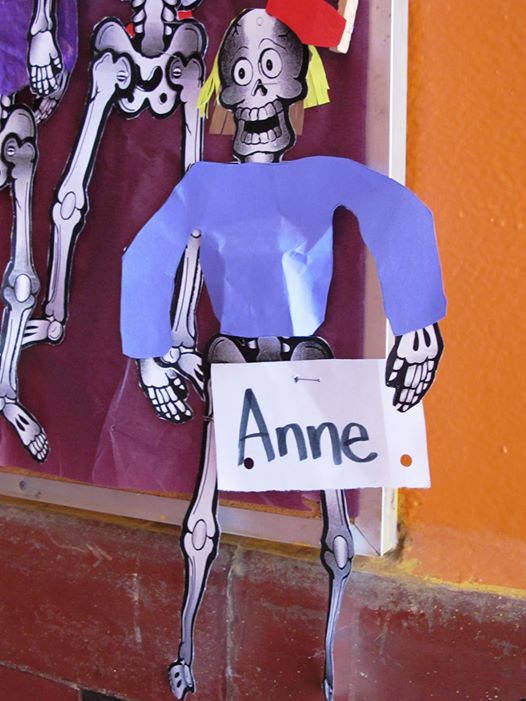
My research interest in Mexico was borne out of a desire to understand how families, particularly mothers, responded to and experienced their children’s deafness – a situation that was, for most of them, completely unexpected. I use in-depth ethnographic interviews with parents of deaf children, mostly mothers, to learn how they understand deafness and seek services and support for their children. These interviews are often intensely emotional, and I realized time and again how the embodied experiences of carrying a child, of mothering, and of being a mother deepened my connection to my research and the participants I work with. While I was pregnant, I did not have to disclose my status as a mother to participants; mothers connected with me knowing that we shared in experiences like worry, pride, exhaustion and anticipation that accompany motherhood. During our time together in interviews, many mothers would lean in as they talked about their children and appeal to my sense of understanding, using some version of this expression, “Pues, ¿somos Mamas, verdad?” (Well, we’re all mothers, right?).
"As youth participants watched my pregnancy progress, they asked me questions about the sex of the fetus, or if we had names picked out. This gave them the chance to interview me, something I asked of them and thus, playfully disrupted the dreaded researcher-participant power imbalance."
Deaf youth, who depend on visual information, were keenly aware of my pregnancy during fieldwork. Most came from large families and had younger siblings or cousins. My growing belly, baby and family allowed me to share a ‘home’-like intimacy with them; we were able to communicate about life beyond the research context. The younger deaf children especially liked to touch my growing belly and speculate about fetal body parts (“I feel a foot!” or “the head is down!”). I chose photovoice (adapted from Wang and Burris 1997) for research with deaf youth participants for its visual nature. Because participants took digital imagery in response to my research questions and themes, they also brought their personal lives, or ‘homes’ to the field in ways ‘traditional’ ethnographic methods alone may not have facilitated. As youth participants watched my pregnancy progress, they asked me questions about the sex of the fetus, or if we had names picked out. This gave them the chance to interview me, something I asked of them and thus, playfully disrupted the dreaded researcher-participant power imbalance. The children occasionally imparted advice, acting as “expert”; they reminded me “cuídate mucho” (take good care) or “¡hay que comer bien!” (you must eat well!). Bladimir (Figure 2) and I liked to discuss pregnancy because his mother was pregnant at the same time I was.
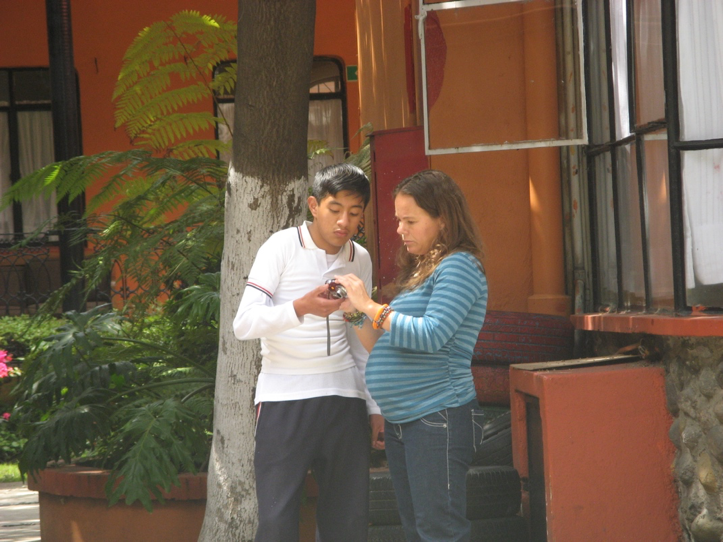
Figure 3 is an image I took on the Mexico City Metro (subway) for a photovoice theme “México y la Ciudad” (Mexico and the City). In our photovoice workshop, I modeled the process of contextualizing photos by explaining how I identified with both representations of “mother” on the sign because my daughter was a young toddler while I was pregnant with my son.
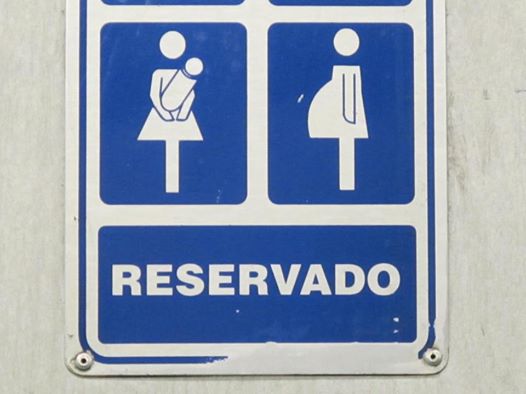
Transportation was a recurrent theme in participant interviews; parents and youth often told of long journeys on public transit. Mothers, by and large, accompanied their deaf children on long daily commutes to school. The deaf signing school that was my primary research site was one of very few sign language-using options for families, but was located in central Mexico City where it is expensive to live. I could afford an apartment just a few Metro stops away, but most participants lived outside the city. Eunice traveled nearly six hours daily from a semi-rural township to Mexico City with her deaf daughter and her younger siblings not yet school-aged. She was often appalled when passengers remained seated while she carried, or even nursed, a child while standing on the Metro. Eunice’s frustrating and exhausting experiences contrasted sharply with my own relatively unencumbered routine because I did not travel by public transit with my own children until they were much older. This image, therefore, is an opportunity to acknowledge my privilege and underscore the limitations of a gloss such as “motherhood,” especially as an uncritical leveling device between researcher and participants.
The combined “home” and “field” experiences of mothering in the field allowed me to partake in this tradition with my participants.
As mentioned above, I flew home to Florida midway through fieldwork to be with our family for childbirth. Through Facebook and word of mouth, my participants received news of our baby boy who we named Oscar. Sign names, referred to as one’s seña (sign) or apodo (nickname) in Mexico, are an important component of deaf culture; they are usually assigned by deaf community members, often playing off a person’s physical or personality attributes. As a person grows and changes, their seña can be changed or modified. Upon our return, deaf youth participants wanted to know if I had given Oscar a seña, and I asked if they would give him one. María Isabel was the first to offer, “Why not this one?” while signing her suggestion: an O handshape moving so that rounded fingers and touching thumb represented a suckling newborn’s mouth. The handshape and movement also evoked the sign for bebé (baby). Everyone in the room emphatically agreed, nodding, making the sign for ¡Sí! (yes!), laughing, and trying out Oscar’s new seña. María Isabel quickly added, “Obviously, he’ll have to change it when he gets older!” which was also met with laughter and agreement. Youth participants readily identified the use of señas as a distinguishing feature of Mexican deaf culture. The combined “home” and “field” experiences of mothering in the field allowed me to partake in this tradition with my participants. This example illustrates how the researcher-participant relationship can develop, even through a “patchy” time in fieldwork (Günel et al. 2020). Though my fieldwork was “interrupted”, my participants and I maintained contact and bonded in culturally-specific ways thanks to the serendipitous timing of Oscar’s arrival. Figure 4 is an image of Oscar and I in Mexico City during fieldwork in 2013.
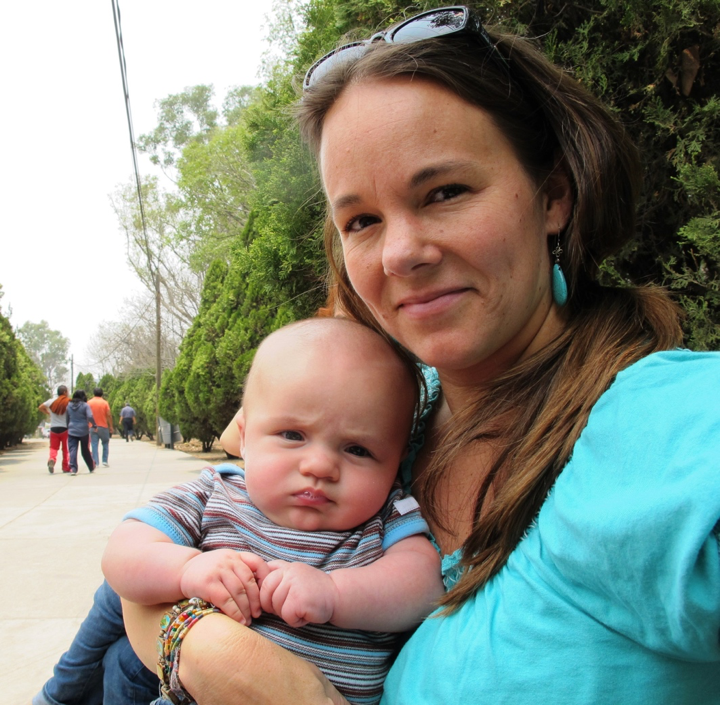
Conclusion
Mothers and their children comprised an important segment of participants in my study and the images in this essay help describe some of the unique and profound opportunities that pregnancy afforded during ethnographic fieldwork. The images explore the complexity of positionality in ethnographic inquiry, reminding us that there is no universal experience of “motherhood” (Anthropology of Motherhood 2022; Vindrola-Padros et al. 2015) and that motherhood does not equilibrate the positionality of the author. However, motherhood and pregnancy also brought “home” to the “field” which created authentic connections between researcher and participants. Pregnancy was a unique and temporary time in my life, one that I am thankful overlapped with my fieldwork. However, as Günel et al. (2020) point out, a constellation of personal and political circumstances can undermine the long-term “traditional” ethnographic research that was once considered a disciplinary gold standard in anthropology. Following their lead, I hold up my experience as one way to transform what might initially be considered a “limitation” or “constraint” into an opportunity for special, circumstantial connections within a particular community. This experience also suggests the value of alternative or “nontraditional” research schedules and participatory methods which may further help researchers recombine “home” and “field” in novel ways.
References
Anthropology of Motherhood (2022) https://www.anthropologyofmotherhood.com/ (accessed 5/26/22).
Günel, Gökçe, Saiba Varma, and Chika Watanabe. 2020. “A Manifesto for Patchwork Ethnography.” Member Voices, Fieldsights, June 9. https://culanth.org/fieldsights/a-manifesto-for-patchwork-ethnography
Vindrola-Padros, Cecilia, Pfister, Anne E., Johnson, Ginger A. (2015) The Role of Anthropology in Improving Services for Children and Families: An Introduction. Annals of Anthropological Practice 39(2): 89-95.
Wang, Caroline C., and Mary Ann Burris. 1997. Photovoice: Concept, Methodology and use for Participatory Needs Assessment. Health Education & Behavior 24(3):369-387.
You may republish this article, either online and/or in print, under the Creative Commons CC BY-ND 4.0 license. We ask that you follow these simple guidelines to comply with the requirements of the license.
In short, you may not make edits beyond minor stylistic changes, and you must credit the author and note that the article was originally published on Home/Field.
